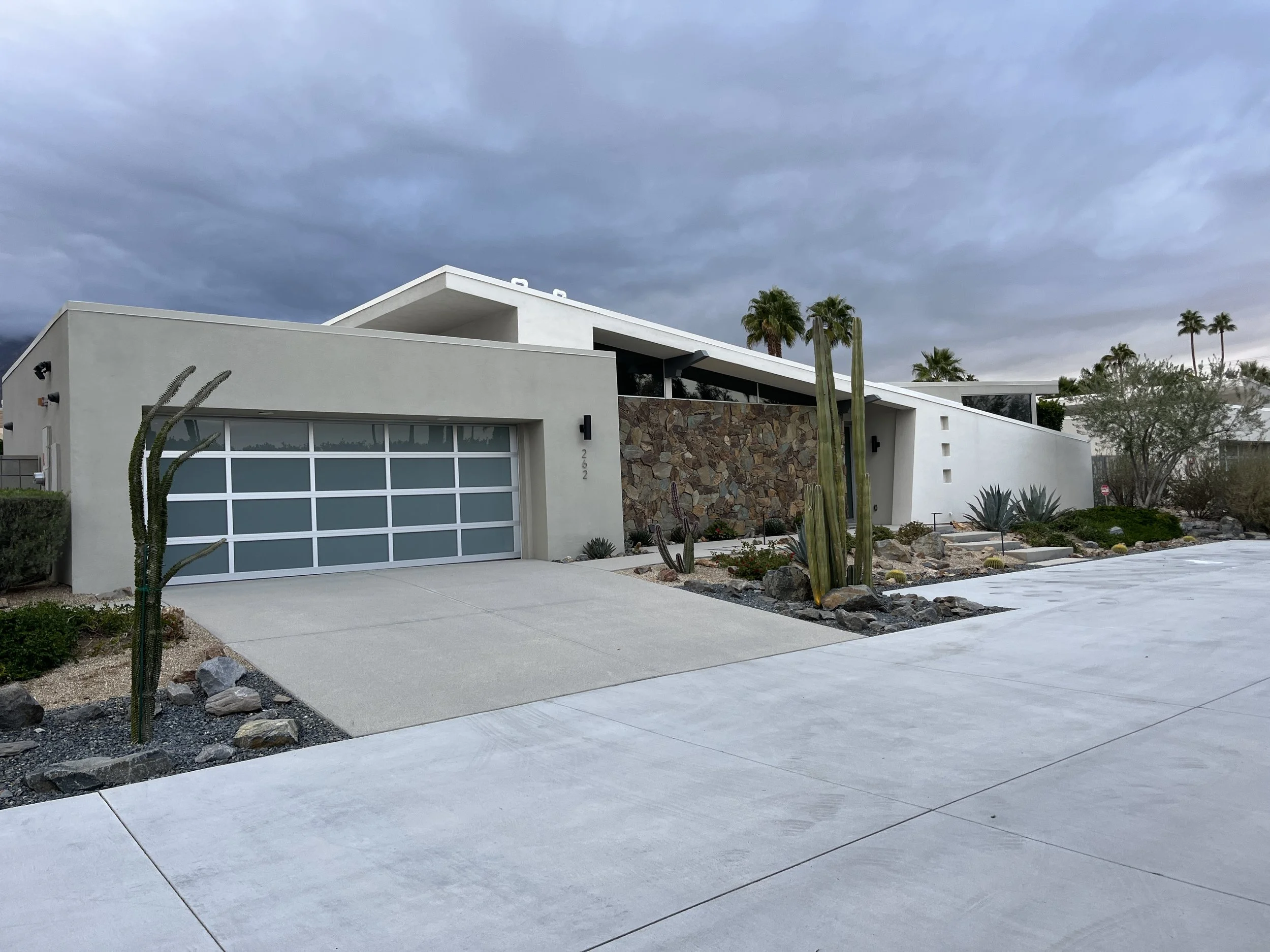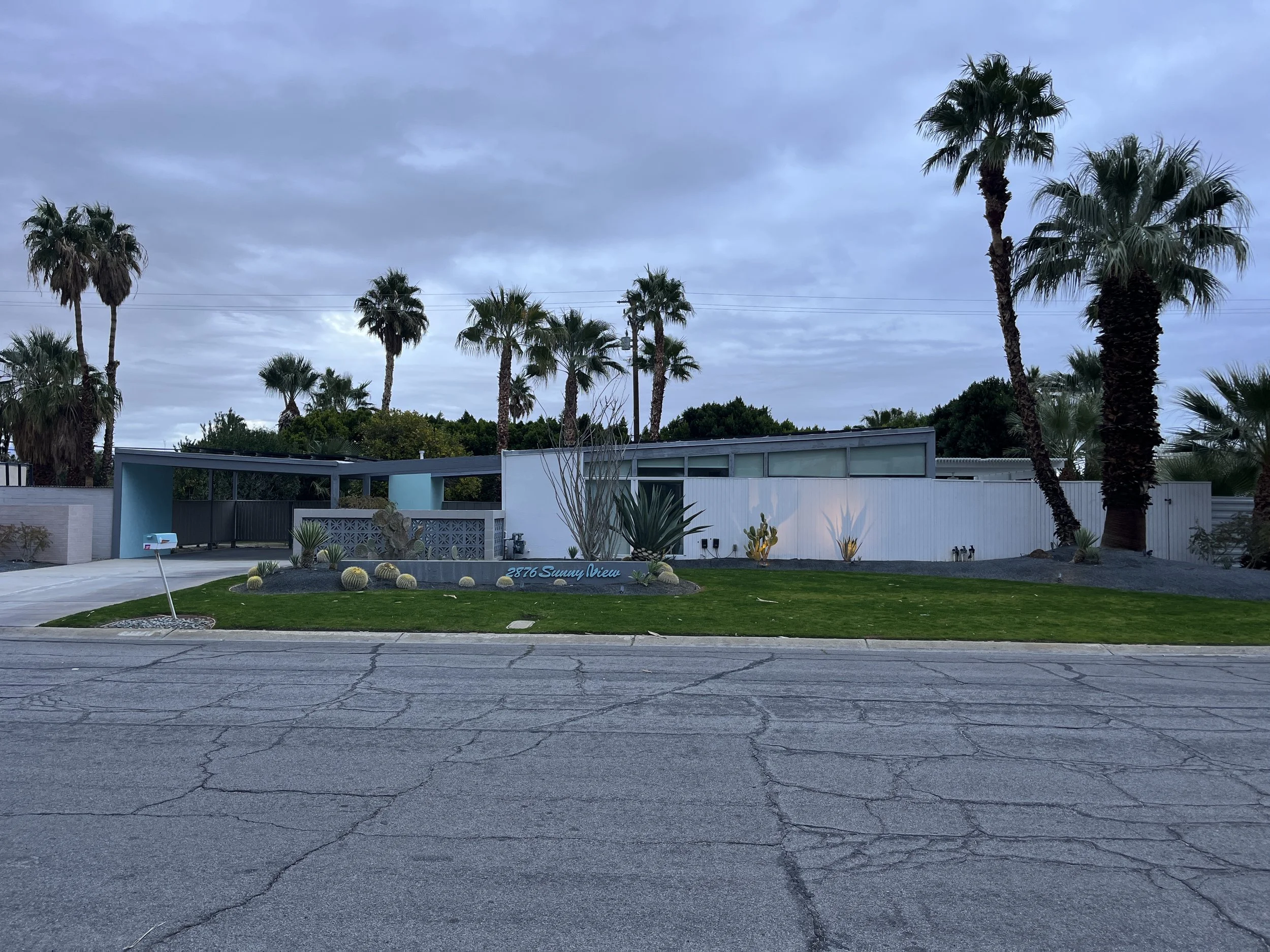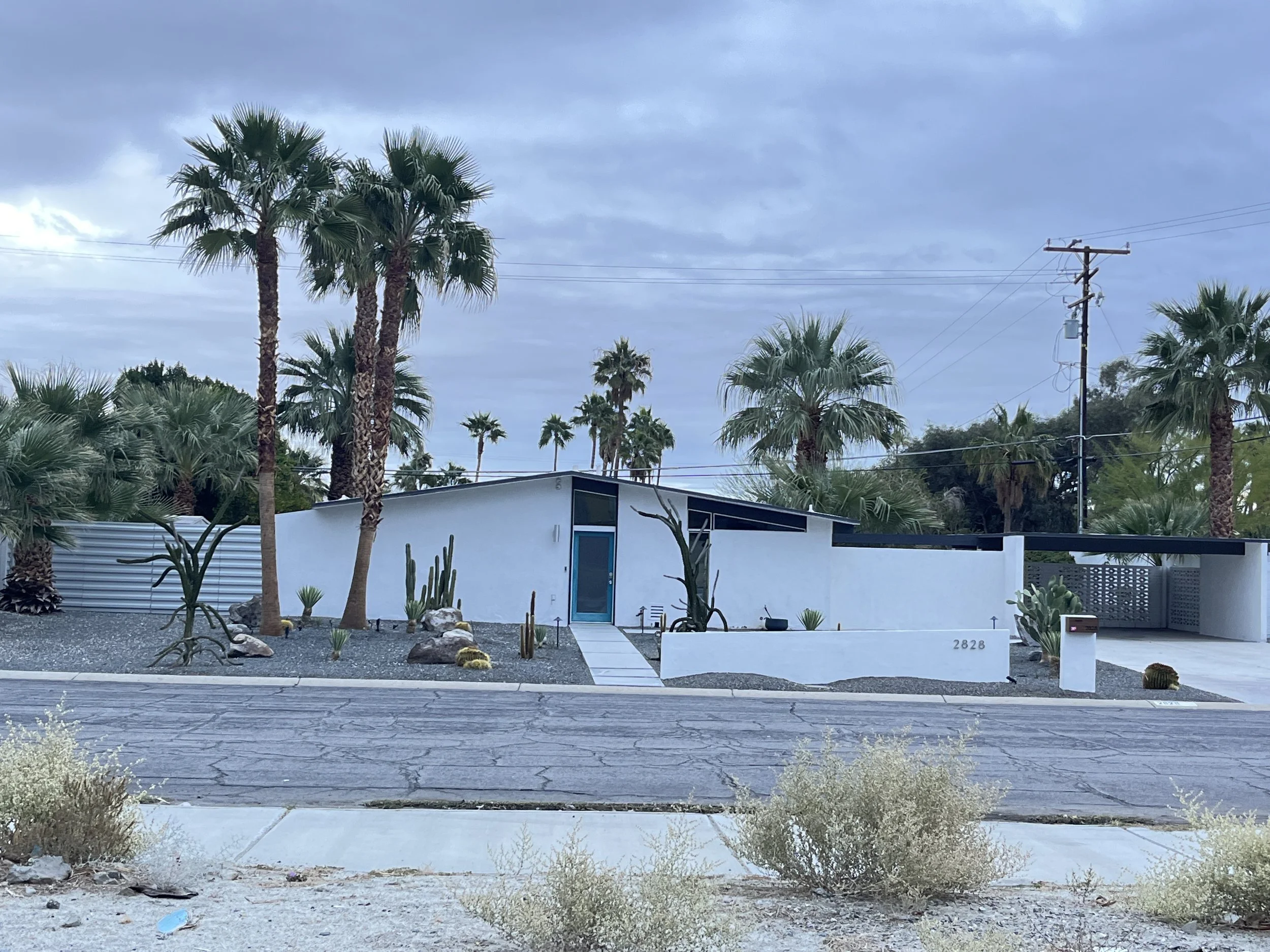Architecture: Palm Spring's Desert Modernism
©Ari Adams
Photo Editing and Text by Ari Adams
While Mid-Century Modern design and furniture might be some of the most sought after aesthetic by the likes of those making up the current Dimes Square scene, the design movement finds its roots in architecture. Characterized by the use of clean, simple lines and lack of decorative ornamentation, the Mid-Century Modernist architectural movement is best exemplified in Palm Springs, California.
©Ari Adams
Palm Springs, a desert oasis in Southern California, has long been known for its mid-century modernist architecture and draws in architecture-loving tourists from around the region and world to view this unique style of architecture. With its sleek lines and emphasis on indoor-outdoor living, this style of architecture perfectly captures the laid-back, luxurious spirit of the city, which sees sunshine throughout the vast majority of the year.
©Ari Adams
Mid-century modernist architecture first emerged in the mid-20th century and was characterized by a focus on simplicity, functionality, and an integration with the natural surroundings. In Palm Springs, this style was particularly popular in the 1950s and 60s, when the city was a haven for Hollywood celebrities looking to escape the bustle and smog of Los Angeles. The city housed creatives and entrepreneurs like Frank Sinatra, and Elvis Prestley, while providing locations to shoot movies like James Bond’s Diamonds Are Forever which shot in the Arthur Elrod House.
©Ari Adams
One of the most iconic examples of mid-century modernist architecture in Palm Springs is the Kaufmann Desert House, designed by legendary architect Richard Neutra in 1946. The house, which was commissioned by department store magnate Edgar J. Kaufmann, is a masterpiece of modernist design, with its flat roof, floor-to-ceiling windows, and seamless integration with the surrounding desert landscape.
©Ari Adams
Another notable example of mid-century modernist architecture in Palm Springs is the Elvis Presley Honeymoon Hideaway, designed by John Lautner in 1962. This futuristic-looking home, which was built for Presley and his new bride, Priscilla, features a circular design and a roof that appears to float above the house while seemingly making the home look like a winged creature that is about to shoot into space.
©Ari Adams
Besides the famous private homes of the rich and famous that can be found throughout Palm Springs, Mid-Century Modernist architecture can also be found in the city's public buildings and commercial spaces. The Palm Springs International Airport, for example, was designed by modernist architect Paul Williams in 1959 and features a futuristic, spaceship-like design. Meanwhile, the Architecture and Design Museum, which sits just outside the main strip of Downtown Palm Springs, exemplifies the architectural style with its flat roof and use of material that seamlessly blends the building into the surrounding desert mountain range.
Aside from the homes for the ultra-wealthy and the public buildings that dot the city, Mid-Century Modern architecture has served as inspiration for newer developments of homes throughout the city, providing even those with more modest means the ability to live in beautiful homes that fit snugly into the city’s desert landscape. While the style may seem retro in an age of ultra-futuristic architecture, the style finds its roots in the history of the modern American West, providing not only Palm Springs, but the United States with a priceless style in terms of the architectural movement’s cultural value.













